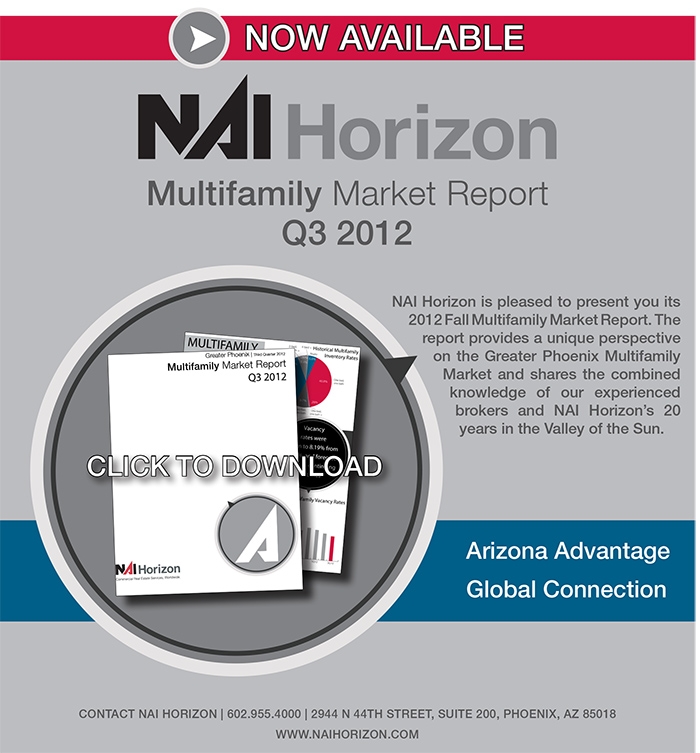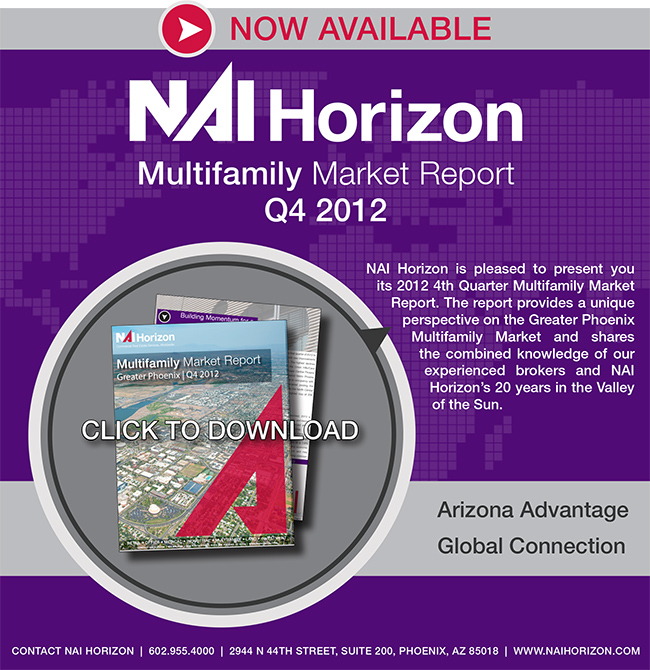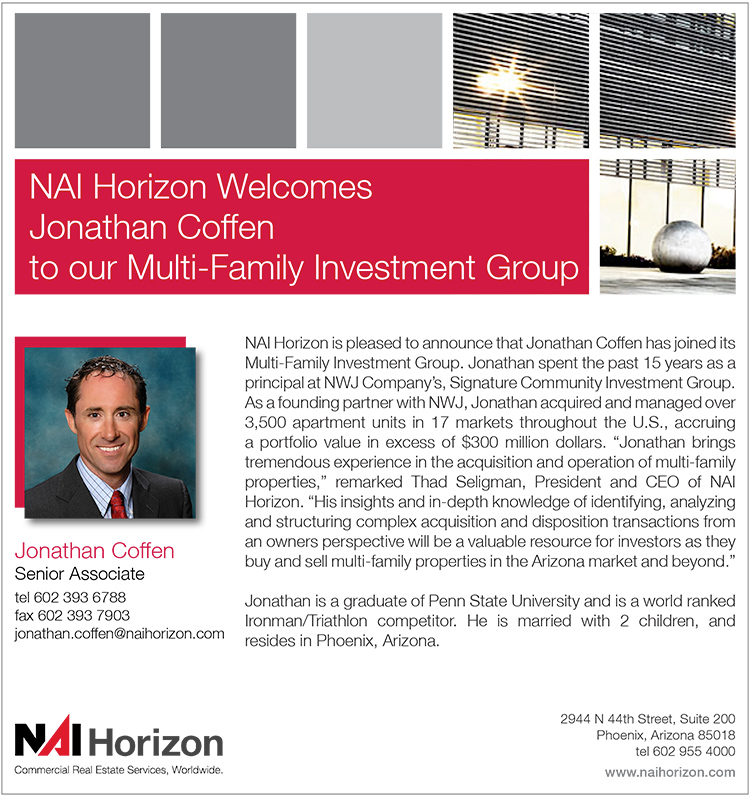The Phoenix multifamily sector was the best performing sector of commercial real estate during the third quarter. Vacancy rates were down to 8.19% from 8.56%, and forecasts point to continuing declines. With the positive vacancy turn, rental rates are increasing; projecting through the duration of 2012, rents should reach $787. Also beneficial for the sector, the tight credit conditions for unqualified buyers will induce tenants to pursue apartment housing. As noticed during the previous quarter, investors will look for value-add in properties where minor capital injections can find larger turnaround returns. According to the National Association of Home Builders, throughout the US home builder confidence spiked an 11.6% gain in construction permit issuance, and a 15% gain in new housing construction. Both cases of growth are the strongest recorded numbers since July of 2008.
Third quarter vacancy rates for stabilized units improved to 8.19%, while there were six submarkets that recorded vacancy below 6%. The Gilbert/Queen Creek submarket noticed the lowest vacancy at 5.45%, while North Scottsdale/Fountain Hills also yielded a low vacancy rate of 5.48%. On the opposite end of the spectrum, the Central Black Canyon submarket and the West Central Phoenix submarket posted the highest vacancy rates of 12.68% and 12.04%, respectively. Additionally, the East Mesa submarket had the largest increase of 1.35% to vacancy this quarter, increasing to 6.09%.
The absorption figures during the third quarter increased to 695 units from the previous 268 units recorded during the second quarter. Although positive, fluctuations are prominent throughout each commercial real estate industry as construction strengthens supply and tenant demand searches for the most appropriate deals. On a historical trend basis, this was the lowest third quarter absorption noticed since 2006. Nevertheless third quarter marked the 14th quarter out of 15 with positive absorption. The North Tempe submarket recorded the highest increase in absorption at an additional 455 units. The Goodyear Avondale Submarket absorbed 145 units. Suffering the largest loss of occupied units was the Central Phoenix Submarket with 182 units absorbed. Occupied space should continue increasing; as the level of college debt escalates and the creation of new entry level jobs moves horizontally, a significant number of tenants will choose apartment housing.
Third quarter 2012 maintained average monthly rental rates with a slight uptick of .39% to $777. There were five submarkets that observed rents per unit above $900, while the highest rental rates were noticed in the Central City/Sky Harbor submarket at $1,159, a 7.81% increase. As with the previous quarter, the lowest rent was recorded in the Central Black Canyon submarket at $551. There are barriers that will impede further rent growth; the higher costs of transportation, inflation on all consumer products, and in general the drop in disposable income. However, apartment communities that offer location efficiency will find a flood of tenants.
The average sale price per unit was $86,722 and $96.35 per square foot, representing a $27,213 increases in sale price. According to Real Capital Analytics, the total sale volume for the Phoenix market was at $668,300,000. This level is only down slightly, from the approximate $730,000,000 noticed in the previous quarter. Both levels are significantly high for historical standards. The top multifamily transaction of the quarter was Andante, a 576 unit complex that sold for $61,300,000 at 15801 S 48th St in Phoenix, AZ. Price per square foot was listed at $119.58 and the price per unit at $106,424.
In the new construction development arena, there are nearly 2,750 units either under construction or scheduled for construction. Furthermore, 1,250 units are conditioned for final plan approval. Amidst the troubling economy, the slight uptick in growth has also induced a luxury friendly group of tenants. Such tenants have created an opportunity for developers to increase building on properties that offer amenities like dog parks, resort style swimming pools, and actual movie theaters. A 75,000 SF former LA Fitness center in Tempe will be re-developed into a 240-unit luxury complex. Also, in the DC Ranch area of Scottsdale, 224 luxury apartment condos have development underway. Such initiatives show the mix of tenants and opportunities abundant for multifamily housing.
Across the US, sale volume for apartments through the first two months of the third quarter totaled $9.9 billion; the volume in August 2012 accounted for 38.2% of all sales of commercial properties over $2.5 million, according to Pension Real Estate Association. Also, cap rates throughout the US have trended up from lows noticed during the second quarter. Cap rates averaged 6.35% during the first two months of the third quarter. In the Phoenix market, cap rates offered similar returns at 6.3%.




